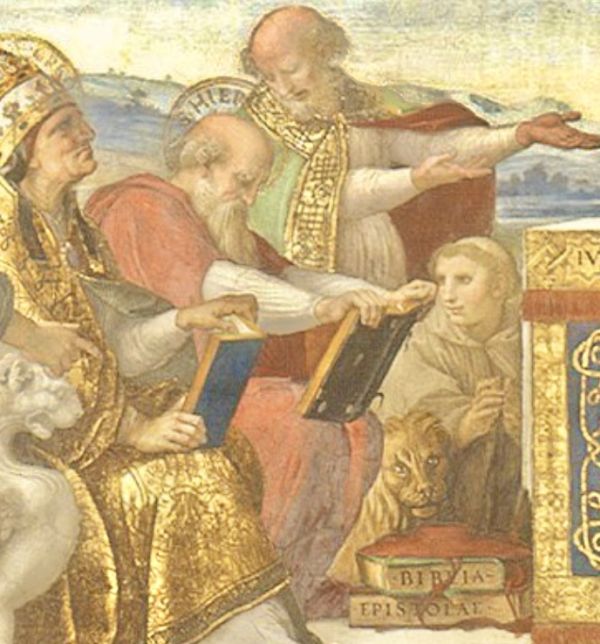In this part of chapter 6 of the Johannine Gospel it is emphasised by Jesus that no one can go to Him unless the Father draws him.
Whoever listens and learns from the Father goes to Jesus.
Francis, always listening to the Word and instructed by the Spirit, one day told his brothers the following:
"The Order and the life of the Lesser Brothers resembles a little flock, which the Son of God, in this last hour, asked of his heavenly Father, saying:
"Father I wish that you would raise up and give to me in this last hour a new humble people, different in their humility and poverty from all the others who have gone before them, and happy to possess only me alone." And the Father answered his beloved Son:
"Son, what you have asked is done".
Francis then added that the Lord wanted the brothers to be called 'Minor', because this is precisely the people asked by the Son of God to his Father, and of them it says in the Gospel: Do not be afraid, little flock, for it has pleased your Father to give you the Kingdom; and again: What you did to one of the least of my brothers (minors), you did to me.
'Although here the Lord speaks of all who are poor in spirit, yet he intended to refer in a special way to the Order of Friars Minor, which would flourish in his Church' (FF 1617).
And Clare, in the enclosure of the Damianite walls, writing to her spiritual daughter Agnes of Prague:
"Fill yourselves with courage in the holy service which you have begun by the ardent desire of the poor Crucified One. He for all of us bore the torment of the cross, snatching us from the power of the Prince of Darkness, who held us in chains as a result of the sin of the first man, and reconciling us with God the Father'" (FF 2863).
These two saints testify with their lives that for them the Bread that comes from God is the Word of Jesus and the ultimate self-giving Act of Him, transformed into everlasting salvation for us all.
The prayer dear to Francis, and often repeated by him before the Crucifix, is an externality of listening and faith at the same time, of footsteps directed to communion with the Father and his Son Jesus in the Spirit.
""Most high and glorious God, / illumine the darkness of my heart. / And give me straight faith, / certain hope and perfect charity,/ wisdom and knowledge, / Lord, / that I may do your holy and true commandment. Amen"" (FF 276).
«No one can come to me unless the Father who sent me draws him» (Jn 6:44).
«He who believes has the Life of the Eternal One» (Jn 6:47).
Thursday of the 3rd wk. in Easter (Jn 6:44-51)












